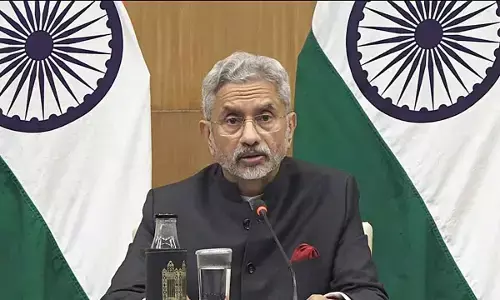Is A Demographic Disaster in the making?

In the run-up to the elections, the Modi government has received a good news. The United Nation on Thursday released a report, stating that formal unemployment in India during the year 2023 stood at 4.1%, the lowest in 12 years, while the country’s GDP expanded by 6.8%, the fastest among major economies. The World Bank projects that the Indian economy will grow at 7.5 per cent in 2024, increasing its previous forecast by 1.2 per cent. Global rating agency Moody’s raised growth projection for 2024 calendar year to 6.8 per cent, up from the 6.1 per cent earlier. Fitch raised India GDP growth forecast to 7.8 per cent, while RBI predicts economy would grow by over 7.6 per cent.
Various analysts and researchers are forecasting a robust growth for India, and that the economy would sustain the current levels in the future too. However, economists are pointing out how an underlying challenge to the economy is getting more pronounced over time. Consumption expenditure by private sector, thought at a steady growth, is yet to match the pre-pandemic levels. Even that is sustained by an increasing capital expenditure by the government, which may hit a rough patch, with tax revenue growth rates lagging far behind that of nominal GDP growth.
With the agriculture sector in the deceleration mode, rural distress is turning acute. The government spending on infrastructure has emerged a sole major driver of growth for the core sector industries. Any resort to higher borrowings by the government to sustain growth levels may push interest rates up and private sector may be constrained to hold their investments. Add to their woes the growing reluctance among the general public to tighten their purse strings amid inflationary trends. Perhaps, this explains the proclivity of the political class to target more subsidies, and freebies too, for the vulnerable groups of the population.
Economists, and the famous Okun’s Law, have proved how higher growth leads to lower unemployment. The UN report on Thursday also confirms this. The only issue is that the growth in employment does not seem to be commensurate with the size and growth rate of population such as India’s. At 1.428 billion, India became the most populous country in the world last April.
The Central and the State governments are doing much on the employment generation, but it is just not enough. As per CMIE, unemployment rate in India, among those aged 15 years and above, eased to 8.7 per cent in December 2023 from 8.9 per cent in the previous month. Still, it is at fairly high levels, if one keeps in view India’s population or employable numbers. Why worry about agriculture? According to the Periodic Labour Force Survey (PLFS) 2021-22, it remains the largest source of employment, accounting for 45.5% of the workforce.
India’s problem with inequality lies in low wages with most jobs requiring low/semi-skilled labourers, with low productivity. Then, it is no surprising India is among the most unequal countries in the world; its top one per cent of population owns nearly 60% of the total wealth. As such, there is a pressing need not only to create more jobs, but also pull out more from the low wages bracket.
The ILO and the Institute of Human Development (IHD) in their ‘India Employment Report 2024’ point out the glaring discrepancies in wages between contractual and unorganised markets. Amidst the few jobs scenario, wages are
getting stagnant amid rising inflation. NCRB reports state
economic distress as a major cause for suicides in India. Sadly, this issue is missing in the raging electoral rhetoric. Time is narrowing and new government must do all it can to prevent a demographic disaster in India.
















